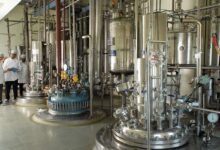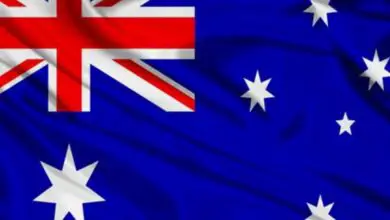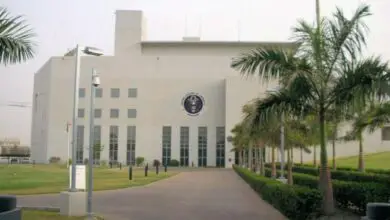Interesting Facts About the Australian Economy
Facts and Figures About Australian Economy
The rest of the world has traditionally viewed Australia as a wealthy, sparsely populated nation that is vulnerable to natural calamities. Australia’s economy is a highly developed example of a mixed economy, combining aspects of a market economy with a planned economy and private businesses with public ones. Australia’s nominal gross domestic output places it as the 12th largest national economy as of 2021. (GDP). Here are interesting facts about the Australian economy.
The nation’s economy was primarily dependent on agriculture and foreign investment up until World War II. Due to the rapid expansion in manufacturing advancements and resource extraction that immediately followed the Second World War, this quickly changed.
The Australian Economy: Facts and Figures
Australia has experienced significant growth, breaking the record for the longest period of continuous GDP growth in March 2017. That year was the 26th in which Australia had experienced a recession (two consecutive quarters of negative growth). An approximate estimate put the nation’s GDP in June 2021 at a staggering $1.98 trillion.
However, following nearly 30 years of economic prosperity, the nation had its first recession since 1991 in 2020 as a result of the economic effects of the Covid 19 pandemic.
Even Australia, known as “The Lucky Country,” which famously survived the 2008 financial crisis, seems to have been unable to escape the effects of the coronavirus outbreak.
The GDP decreased by 7% from April to June compared to the previous three months, which was a greater decline than the previous quarter and the worst result since the nation started keeping data in 1959.
Start a business in Australia today.
Apply for an Australian PR from Nigeria
Australia’s Economy: All You Need to Know
Australia’s economy is currently recovering from the recession and expanding faster than anticipated in prior quarters due to individuals starting to spend more of their savings.
As anticipated, the June quarter GDP data reveals record yearly growth as Australia’s economy is currently in a considerably better position than it was a year ago. Nevertheless, despite the good numbers, they are probably the best we can hope for until next year because Australia is still reeling from Covid-19 shocks.
The Australian economy grew by 9.6 percent in the June quarter of this year compared to the same period in 2020. This number surpassed the long-standing record of 9% increase set in March 1967.
Australia’s Economic History and Current State
Interesting Facts About the Australian Economy
Pre–2000s
Australia’s economic development from 1901 to 2000 was quite erratic, particularly in the first 50 years after Federation. Years of rapid development are punctuated with falls of about 5 to 10 percent.
The two world wars, the Great Depression, and agricultural production fluctuation in the first half of the century are all likely contributors to this volatility. However, growth has been far more constant since the 1950s, with the 1990s being the most stable decade of all.
Though the 1990s were the most stable decade overall despite the 1990s recession, growth has been significantly more stable since the 1950s.
The 1990s experienced an average increase of 3.2 percent, which is significantly greater than the century-average GDP rate of 1.7 percent, according to data on historical decade average GDP growth rates.
2000–2010s
The Australian economy entered the new millennium in a strong and stable position. The country benefited greatly from the new economic reforms, and the adoption of inflation targeting in the early 1990s resulted in much lower and more stable inflation.
Another significant development throughout the decade was the housing industry boom at the start of the 2000s. While housing loans expanded by over 90% between 2000 and 2004, housing prices rose by about 70%.
In the final six years of the decade, beginning in 2004, there were less fluctuations in prices relative to income and less severe house price increases, while credit growth decreased gradually.
In this decade, the labor market also performed quite well. The nation had not seen an unemployment rate that low since the 1970s, when it was around 5.5% on average and occasionally as low as 4%.
2010s–Date
The GDP and gross national income (GNI) per capita have grown at their slowest rates in the last decade since the 1960s. Even if statistics from the most recent years, when the economy was being devastated by COVID, are excluded, this is still the case.
The GNI per capita increased steadily between 2000 and 2011 but then fell sharply until 2015, after which it increased more slowly until 2018.
The coronavirus outbreak caused the nation to formally enter a recession on September 2nd, 2020. With the GDP declining by 7% in the June 2020 quarter, this is the largest decline ever. The March quarter had a 0.3% decline in GDP.
Future Projections and Estimates
Australia’s economy appears to be in a lot better position than it was in past years, and it appears likely that the nation’s economy has effectively met and weathered the worst of the current economic storm. It is now displaying promising future trends and projections.
The GDP is anticipated to increase by 4% in 2021 and further 3.3 % in 2022 as a result of higher domestic demand. Both labour demand and confidence are rising. Consumption will be supported by rising income levels and falling saving rates.
Additionally, it is anticipated that the unemployment rate will decrease. As long as widespread immunization is not accomplished, outbreaks may impose limits. Restrictions, however, continue to put a strain on some sectors of the economy.
See if you’re eligible for an Australian PR
Why Australia is an Amazing Migration Destination
Interesting Facts About the Australian Economy
Stability
Australia has a solid reputation for stability and was one of the few nations to stay afloat during the 2008 global financial crisis. When making an investment in the nation, buyers can relax and feel at ease.
Decent Living Conditions
All citizens have high standards of life in the nation. Australia ranks highly in a variety of categories, including life satisfaction, health standards, income, and education. Australia is an excellent destination because of the high living standard and average income.
Tax Benefit
Australia provides a favorable tax system for investors, particularly for those interested in real estate and property investments. There is a tax advantage for property investors known as negative gearing, which essentially bases your tax on the revenue, expenses, and depreciation of your property.
This implies that you can wind up with less income for tax purposes. Australia is a desirable place for investors because there are less taxes to pay at the end of the year.
Open Market Economy
In 2020, Australia was ranked 14th globally for business easiness, making it one of the easiest countries in the world to conduct business.
Australia is an ideal destination for investors thanks to its free-market environment and lax import regulations on goods and services. The availability of a highly educated population and the abundance of resources both support luring in international investment.
The nation’s robust legal system also contributes to the protection of property rights and the reduction of corruption. A strong, unbiased judiciary is also made possible by the stable political climate. As a result, contracts are always upheld, and results are always predictable.
Cost of Living in Australia
For foreigners, the average cost of living in Australia is typically a little expensive. Even while many Australian cities are less expensive than cities like New York, London, or Paris, if you don’t make the appropriate preparations, its remoteness and location can make it a rather expensive place to live.
Housing is typically the largest monthly expense, especially if you live in or near Sydney, the state’s capital. Although they do vary substantially based on your lifestyle, other daily costs like eating out and grocery do depend more on the individual.
Without factoring in rent, the average cost of living for a single expat in Sydney, Australia’s most costly city, comes to nearly $1,000 USD.
Australia’s average cost of living ranks as the 14th highest in the world, to put things in perspective. However, a lot of cities are rapidly falling in the rankings.
Australia doesn’t look so bad after all when you consider that Hong Kong and Tokyo, which frequently rank in the top 10, are 99th and 99th, respectively, on a list of the most expensive cities.
Australia Is Your Best Bet as an Immigrant
In conclusion, Australia has a highly developed mixed economy and is a liberal democracy with a Westminster style of government. Australia’s economy has not always had an easy history, yet despite all the odds, the nation and its economy have always thrived despite having to deal with challenging situations.
The recent covid pandemic may have finally brought Australia’s roughly 30-year streak of economic prosperity to an end in 2020, but the worst appears to be behind the “fortunate country,” and the signals of the economy recovering to pre-pandemic levels are obvious and apparent.
At the end of the day, Australia is starting to become a lot more desirable alternative for expats due to the high quality of life it offers and the consistently falling cost of living. On the whole, the country’s political stability, robust legal system, wealth of natural resources, and availability of a highly skilled labour population all contribute to its being an amazing destination for immigrants.
Learn more about housing options in Australia
Become an Australian citizen via investment








